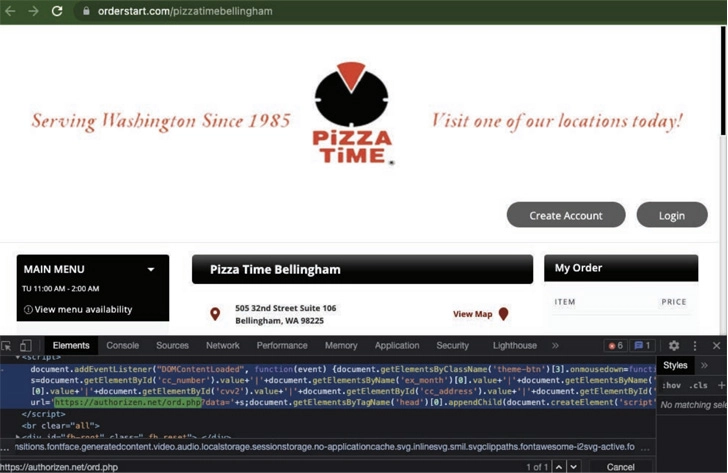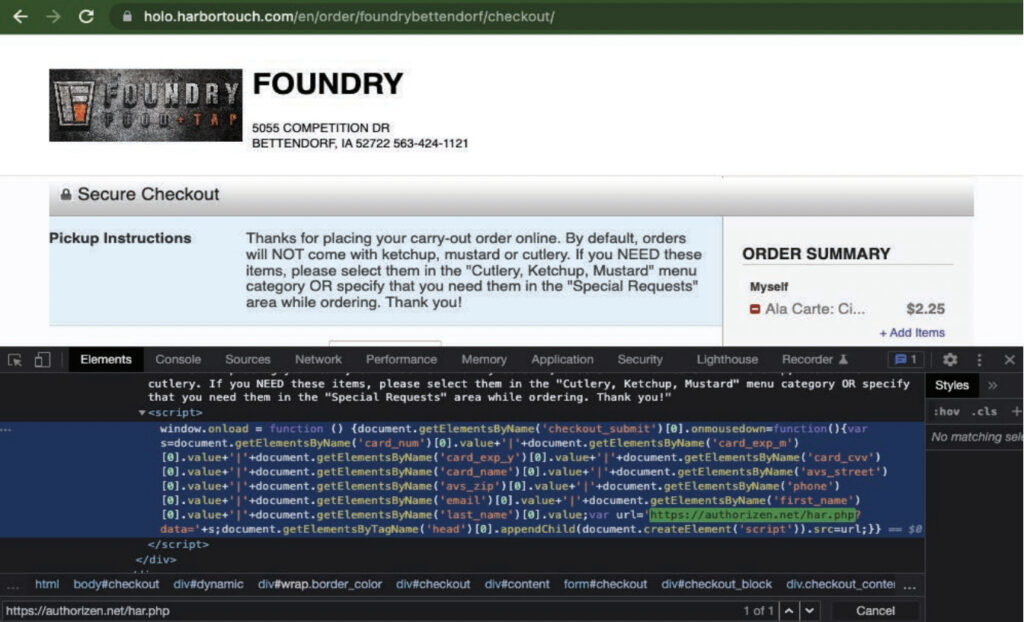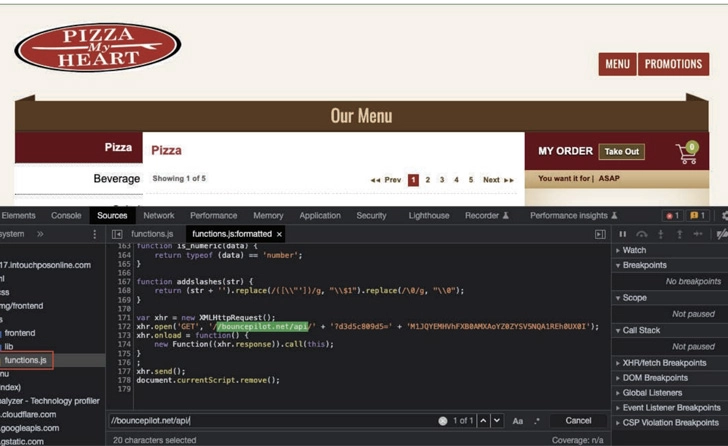Customers from over 300 restaurants’ had payment card details stolen in web-skimming campaigns targeting three online ordering platforms. Web-skimmers, or Magecart malware, are typically JavaScript code that collects credit card data when online shoppers enter it on the checkout page.
The hack was discovered by Recorded Future’s threat detection tool, which identified two Magecart campaigns injecting malicious code into the online ordering portals of MenuDrive, Harbortouch, and InTouchPOS. As a result, 50,000 payment cards were stolen and are being offered for sale on various Dark Web marketplaces.
On these platforms, the web skimmer was injected into the restaurant’s web pages and its assigned subdomain on the online payment service’s platform.
The malware deployed for MenuDrive used two scripts, one for snatching the payment card data and another for collecting the cardholder’s name, email address, and phone number. This was done by attaching to the ‘onmousedown’ event and “responding to clicks of multiple buttons during the account creation and checkout process.”

On Harbortouch, the injected skimmer used a single script to steal all Personally Identifiable Information (PII) and payment card data.

The campaign targeting InTouchPOS started on November 12, 2021, but most of the skimmer injections on web pages happened much later, in January 2022.

The skimmer and the artifacts that characterize it (variable naming, structure, obfuscation, and encryption schemes) link it to older and still ongoing campaigns, Recorded Future says in a report. In this case, the skimmer doesn’t steal the details from the site but instead overlays a fake payment form on valid targets that are ready for the checkout process using a credit card.
Unfortunately, these attacks are still ongoing, and the number of restaurant customers affected is likely to increase. It’s not an easy fix for these companies, but it is certainly something they’re working on at this time.
If you’re a restaurant that is using one of these systems, it would be recommended to try and find an alternative immediately to reduce the chance of your business becoming a victim of this attack. Until they patch and fix their systems, it’s still vulnerable to malicious actors. Until that point, these are the actions your company can take to reduce the likelihood of becoming a victim in a hacking campaign.
When selecting a new vendor for your POS payment system, ensure they are conducting the following security measures:
The following recommendations will help you and your business stay secure with the various threats you may face on a day-to-day basis. All of the suggestions listed below can be gained by hiring CyberHoot’s vCISO Program development services.
Each of these recommendations, except cyber-insurance, is built into CyberHoot’s product and virtual Chief Information Security Officer services. With CyberHoot you can govern, train, assess, and test your employees. Visit CyberHoot.com and sign up for our services today. At the very least continue to learn by enrolling in our monthly Cybersecurity newsletters to stay on top of current cybersecurity updates.
Sources:
Additional Readings:
Discover and share the latest cybersecurity trends, tips and best practices – alongside new threats to watch out for.

Cybercriminals always follow Internet eyeballs. Not literally, but figuratively. And today's eyeballs are...
Read more
Active Attacks on Messaging Apps The Cybersecurity and Infrastructure Security Agency (CISA) recently issued...
Read more
The world of work has changed enormously since COVID-19. Gone are the days when IT admins sat behind a corporate...
Read moreGet sharper eyes on human risks, with the positive approach that beats traditional phish testing.
